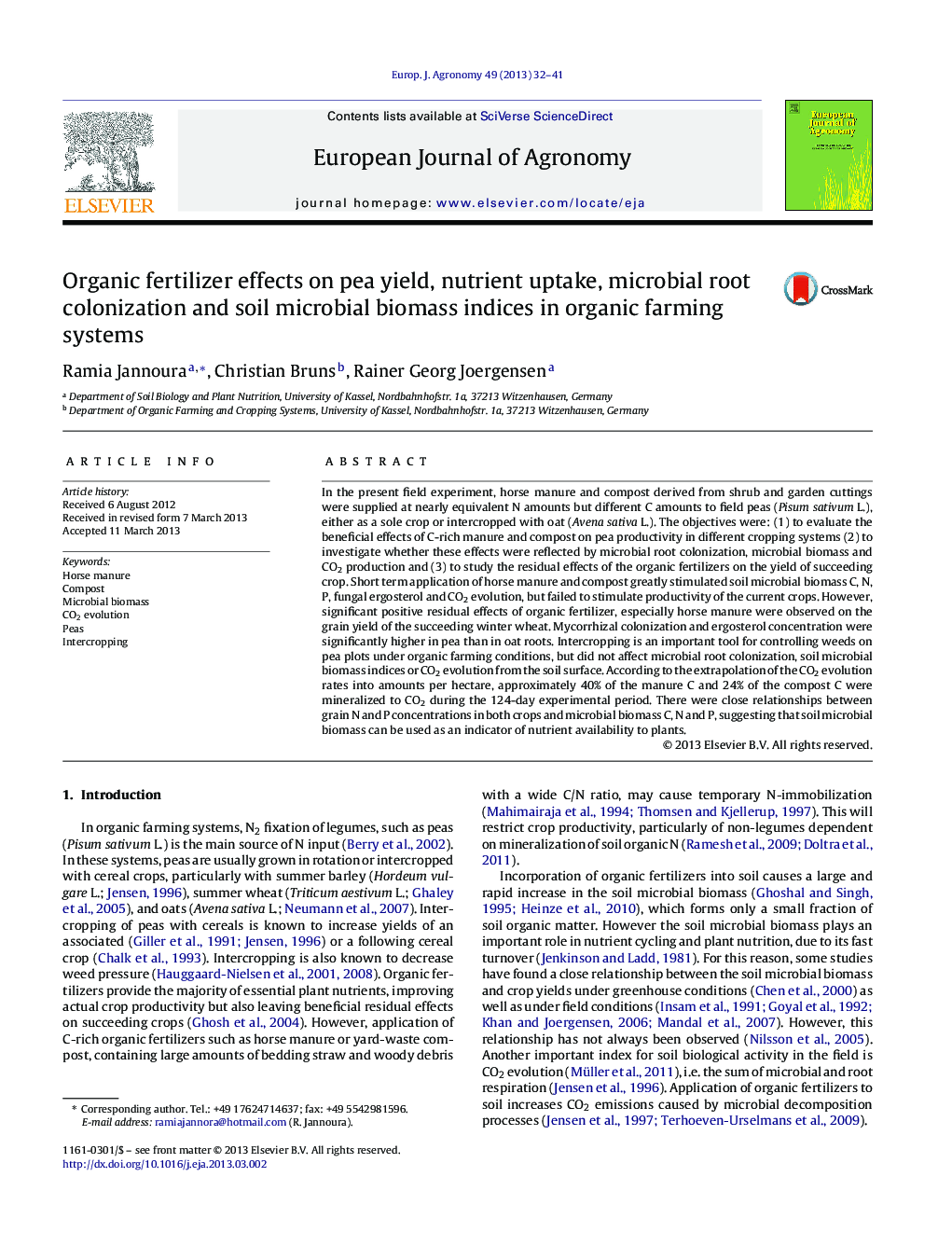| Article ID | Journal | Published Year | Pages | File Type |
|---|---|---|---|---|
| 4509085 | European Journal of Agronomy | 2013 | 10 Pages |
•Application of C rich manure and compost failed to stimulate pea productivity.•S but not N and P concentrations were decreased in pea grain by organic fertilization.•Nutrient concentration in grain and soil microbial biomass were closely related.•Organic fertilization stimulated microbial biomass and activity, but not intercropping.•Intercropping of peas and oats controlled weeds in organic farming systems
In the present field experiment, horse manure and compost derived from shrub and garden cuttings were supplied at nearly equivalent N amounts but different C amounts to field peas (Pisum sativum L.), either as a sole crop or intercropped with oat (Avena sativa L.). The objectives were: (1) to evaluate the beneficial effects of C-rich manure and compost on pea productivity in different cropping systems (2) to investigate whether these effects were reflected by microbial root colonization, microbial biomass and CO2 production and (3) to study the residual effects of the organic fertilizers on the yield of succeeding crop. Short term application of horse manure and compost greatly stimulated soil microbial biomass C, N, P, fungal ergosterol and CO2 evolution, but failed to stimulate productivity of the current crops. However, significant positive residual effects of organic fertilizer, especially horse manure were observed on the grain yield of the succeeding winter wheat. Mycorrhizal colonization and ergosterol concentration were significantly higher in pea than in oat roots. Intercropping is an important tool for controlling weeds on pea plots under organic farming conditions, but did not affect microbial root colonization, soil microbial biomass indices or CO2 evolution from the soil surface. According to the extrapolation of the CO2 evolution rates into amounts per hectare, approximately 40% of the manure C and 24% of the compost C were mineralized to CO2 during the 124-day experimental period. There were close relationships between grain N and P concentrations in both crops and microbial biomass C, N and P, suggesting that soil microbial biomass can be used as an indicator of nutrient availability to plants.
